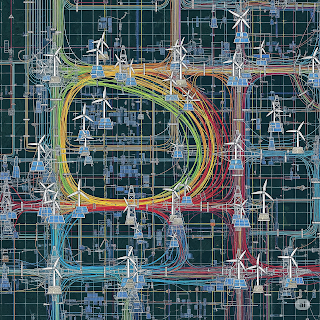🔑 Key Takeaways
📌 India’s renewable energy capacity has expanded rapidly over the last two decades, introducing challenges to grid stability.
📌 Intermittency in solar and wind power causes voltage fluctuations and sudden spikes or drops.
📌 Grid modernization and energy storage are now crucial to manage RE oversupply.
📌 Smart grids, demand forecasting, and battery storage are emerging as key solutions.
📌 India must balance clean energy growth with technological upgrades to avoid future blackouts.
🌍 A Renewable Boom, A New Challenge
India’s renewable energy (RE) journey has been a remarkable success story, with capacity growing exponentially in just two decades. From solar parks in Rajasthan to wind farms in Tamil Nadu, the country is moving closer to its ambitious climate goals. But success has brought its own set of problems.
As the grid absorbs more solar, wind, and small hydro power, it faces a new dilemma — how to manage “too much clean energy.” The problem isn't generation; it's integration.
⚡ The Nature of Intermittency: A Double-Edged Sword
What is Intermittency?
Intermittency refers to the variability and unpredictability of renewable sources like solar and wind. Unlike fossil fuels, RE sources can't be switched on or off at will. For instance:
-
Solar power drops at sunset or during cloudy weather
-
Wind energy fluctuates with wind speed changes
This results in sudden spikes or drops in energy supply, which the traditional grid isn't always equipped to handle.
🛑 Real Risks: What Happens with Oversupply?
Grid Disruptions
When RE sources suddenly inject large amounts of power, it can destabilize the voltage and frequency, leading to:
-
Grid imbalances
-
Equipment failures
-
Even blackouts in extreme cases
Curtailment: Wasting Clean Power
Utilities sometimes shut down renewable generators (curtailment) to maintain grid stability, effectively wasting clean energy.
🔄 The Evolving Grid: Solutions in Motion
1. Battery Storage Systems
One of the most promising solutions, battery energy storage, helps:
-
Absorb excess power during peak generation
-
Supply energy when RE output is low
-
Maintain voltage and frequency balance
2. Smart Grids and Real-Time Monitoring
Smart grids use sensors, automation, and AI to make the grid more adaptive. Benefits include:
-
Real-time forecasting
-
Load balancing
-
Demand response systems
3. Flexible Thermal Power Backup
Thermal plants are now being adapted to run as spinning reserves — quickly ramping up or down based on RE output.
4. Time-of-Day (ToD) Pricing
ToD tariffs encourage consumers to shift electricity usage to times when RE is abundant, such as during the afternoon for solar energy.
🔋 Case in Point: States Facing the Strain
Rajasthan and Gujarat
With high solar output, these states have experienced midday oversupply. As a result, distribution companies often curtail solar power.
Tamil Nadu
During the monsoon season, wind energy floods the grid, forcing shutdowns or export to other states.
📈 Policy Response and Infrastructure Push
National Smart Grid Mission (NSGM)
Launched to modernize the country’s aging power infrastructure, this mission focuses on:
-
Smart meters
-
Real-time data analytics
-
Demand-side management
Green Energy Corridors
Special transmission lines are being laid to evacuate renewable energy from generation zones to demand centers.
🌱 The Road Ahead: Balancing Growth with Stability
India’s transition to a cleaner energy mix is inevitable. But to ensure that clean power doesn’t become a liability:
-
Investment in grid infrastructure must match RE growth
-
Energy storage should be incentivized at utility and consumer levels
-
Dynamic policy support is essential
✅ Conclusion
Renewables are not the problem — outdated infrastructure is. As India marches toward 500 GW of non-fossil capacity by 2030, it must also build a resilient, flexible, and intelligent power grid. Only then can the country realize the full potential of its clean energy revolution.


No comments:
Post a Comment